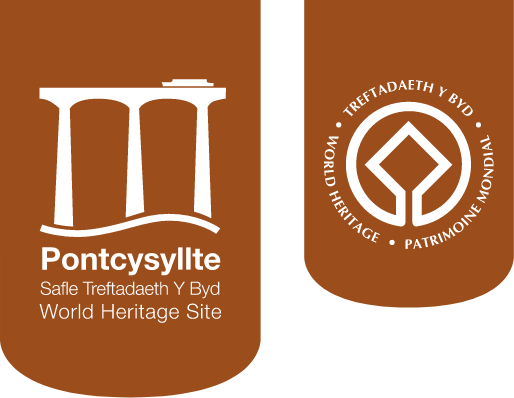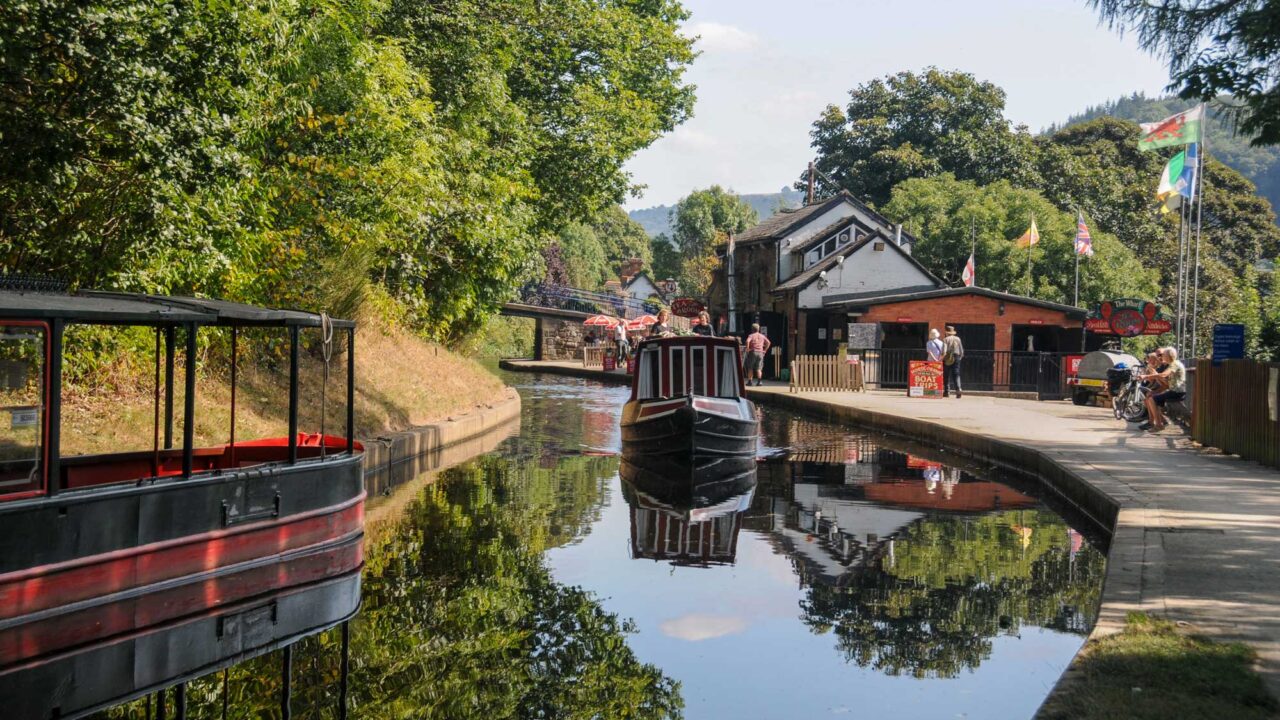Introduction
Llangollen was already an important market town when the canal arrived. Both the town and local industry benefitted as essential supplies such as coal arrived by barge while slate, lime and other goods could be exported much more easily and cheaply.
A public wharf and warehouse were built in the early 1800s. The warehouse was originally built from local stone but was later enlarged in brick as trade grew.
The first goods train arrived in 1861 and gradually trade on the canal dwindled. However boat trips for pleasure started in the 1880s and are just as popular with visitors today!
Click on any Point of Interest marker to view the description
1. Llangollen Mooring Basin
Llangollen Mooring Basin started as a winding, or turning hole, when the canal was built to allow boats to turn round as few of them would be travelling to the end of the canal at Llantysilio.
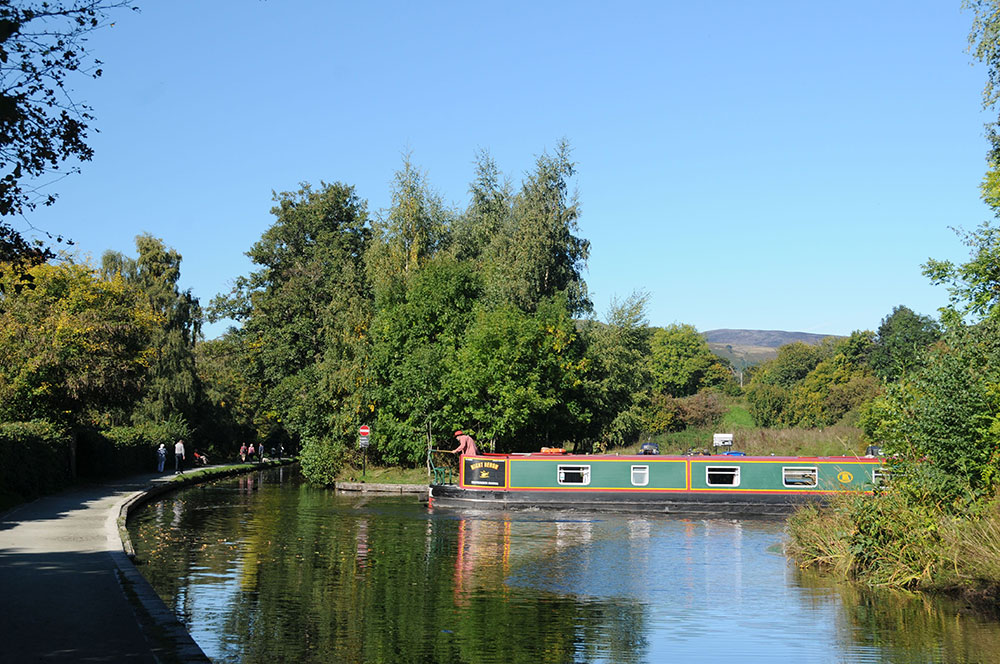
Llangollen Mooring Basin © Jo Danson
In 2004 the winding hole was incorporated into a large modern Mooring Basin for 32 boats at a cost of £1.9 million. The moorings are just opposite the Llangollen International Eisteddfod site. Famous visitors who have taken a narrow boat holiday to visit the International Eisteddfod include Harrison Ford and his wife Calista Flockhart. However whilst they enjoyed travelling on the narrow boat during the day, they preferred to stay overnight in more roomy hotels!
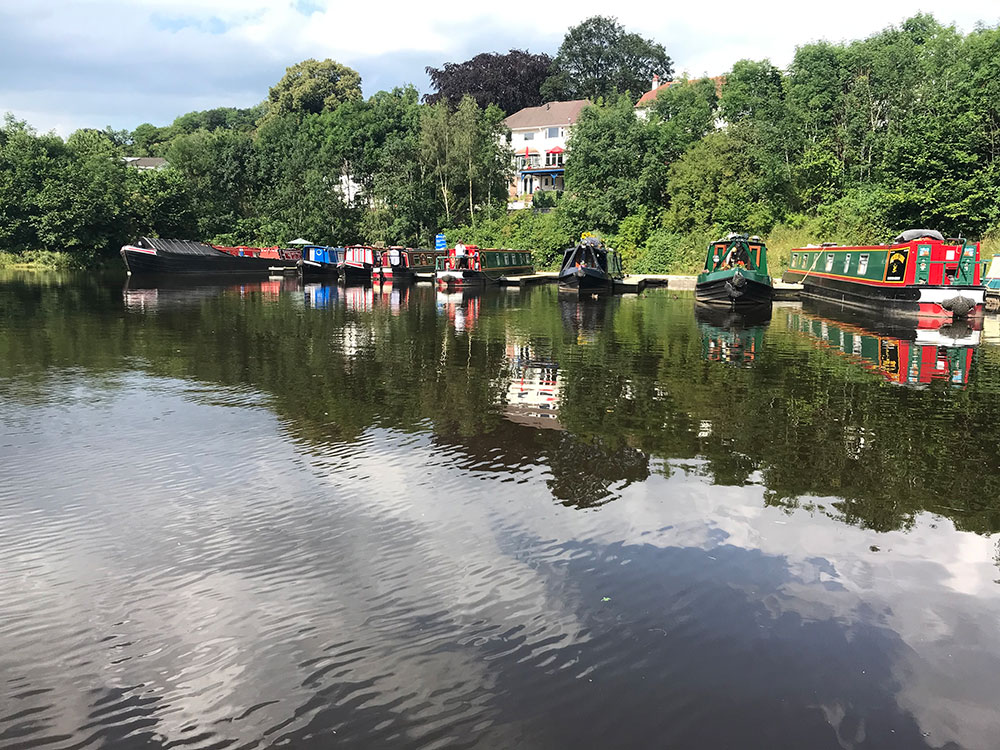
Llangollen Mooring Basin © Jo Danson
2. Llangollen Wharf
Visitors have enjoyed trips along the canal from Llangollen Wharf since 1881 when Mr Newbery of the Royal Hotel ran a pleasure boat service from Llangollen Wharf to Chain Bridge, probably the first pleasure boat service on a canal in Britain.
In 1884 Llangollen born Captain Samuel Jones bought a redundant boat ‘The Pioneer’ and set up a business running daily trips to Chain Bridge and Horseshoe Falls.
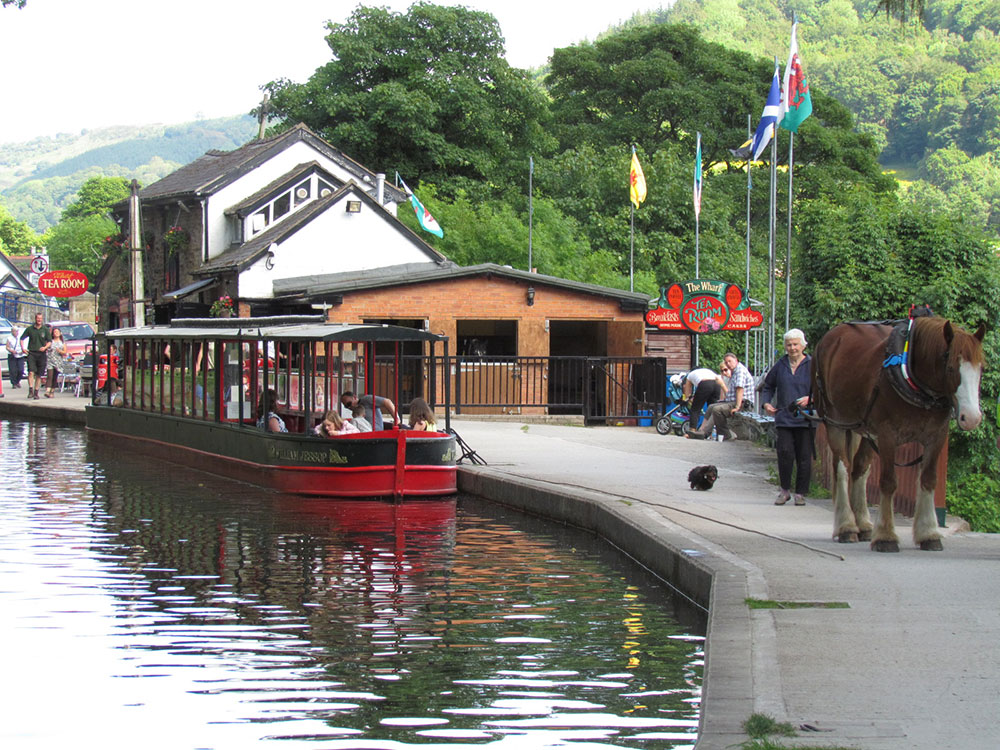
Llangollen Wharf © Heather Williams
Listen to…
…the sound of the horses pulling the boats along the canal
Meet Ifan and Taffy
Captain Jones described the route to Horseshoe Falls as ‘a route of unsurpassed natural grandeur’ and by 1890 he had increased his fleet to six pleasure boats, the largest of which would hold 200 passengers, to keep up with growing demand. At that time he needed seven men and five horses at considerable expense but he said he didn’t grumble!
Captain Jones had travelled the world on steamships working as a chief engineer. There is a story that he may have been pensioned off when he was allegedly drunk and fell off the bridge of a ship!
Certainly in 1901 he was charged with blowing a bugle in a public place in such a way as to cause a public nuisance, something he did every half hour to signal that the boat was ready to depart.
Horse-drawn boats have operated from Llangollen Wharf ever since. It is considered to be one of the oldest leisure orientated business in North Wales and is now one of only three horse-drawn boat companies that still operate in the UK.
Business continues to thrive with over 30 staff employed during the busy summer months. The real attraction is the five Welsh cobs that pull the boats. The horses, working no longer than 3 hours a day, can pull a boat with up to 50 passengers weighing 20 tons with ease on the trips to Pentrefelin and Horseshoe Falls.
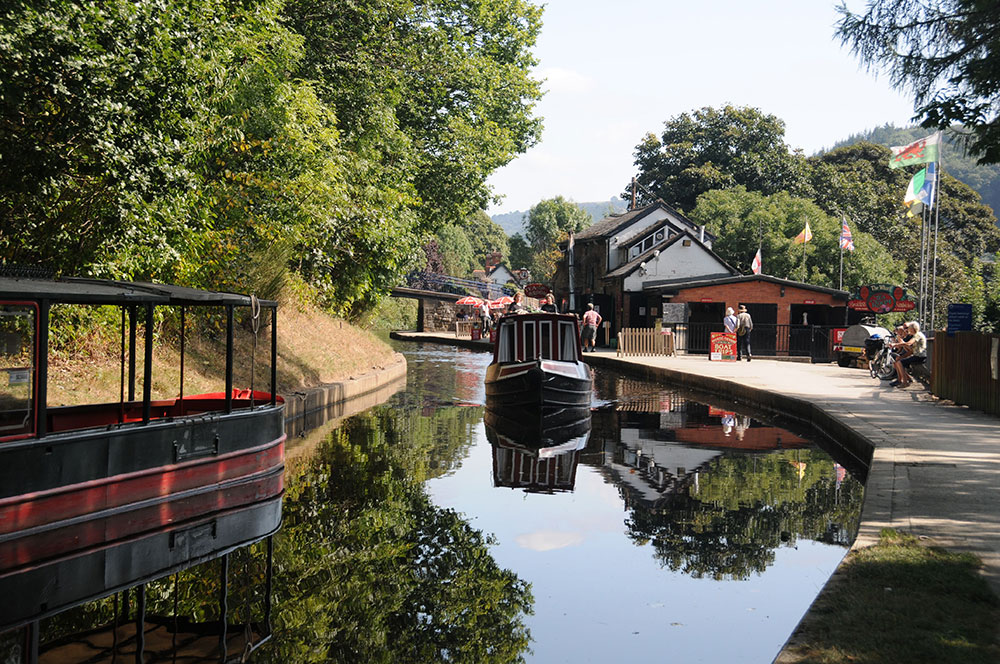
Llangollen Wharf © Jo Danson
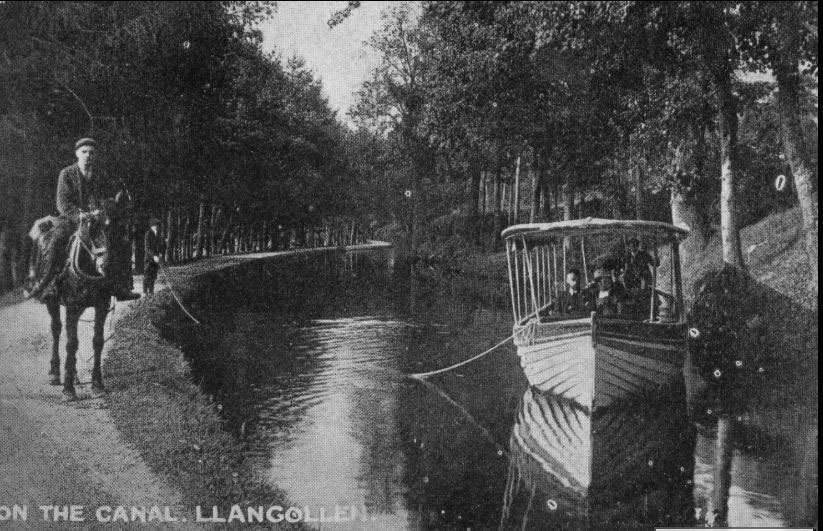
© Llangollen Museum
3. Wharf Hill
Wharf Cottage backs onto the canal and was originally the home of the wharf foreman, sometimes known as a wharfinger. He was responsible for the goods delivered to the wharf and other day to day activities and probably had an office in the buildings at the wharf.
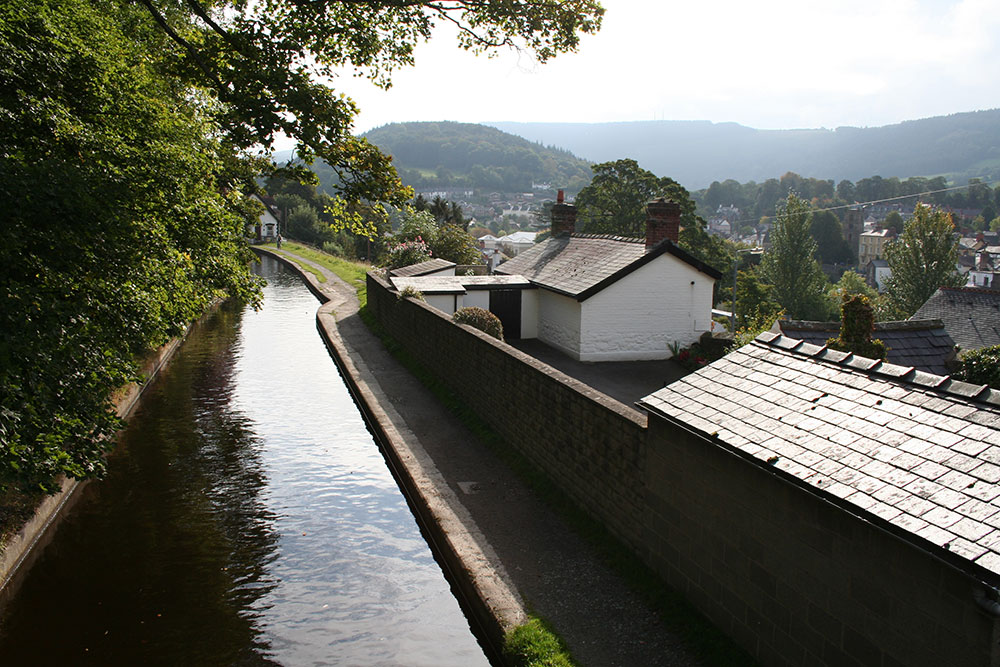
© Crown copyright: RCAHMW
The houses Number 1 and 2 Royal View reflect the magnificent views they have over the town of Llangollen. They were originally one property and were probably built shortly after the canal was constructed.
In 1901 a wealthy coal merchant Charles Williams lived here with his wife Mary and nine children, together with one of his employees. By 1911 Charles’s son, John, who was also a coal merchant, was head of the household at the age of 22, living with five of his sisters, one brother and one of his employees.
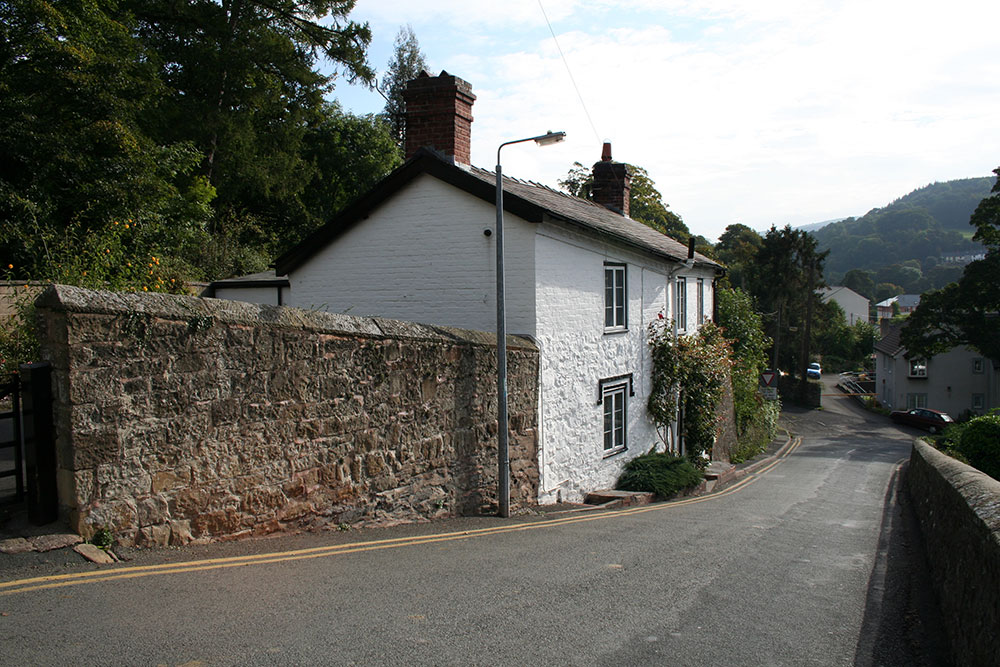
© Crown copyright: RCAHMW
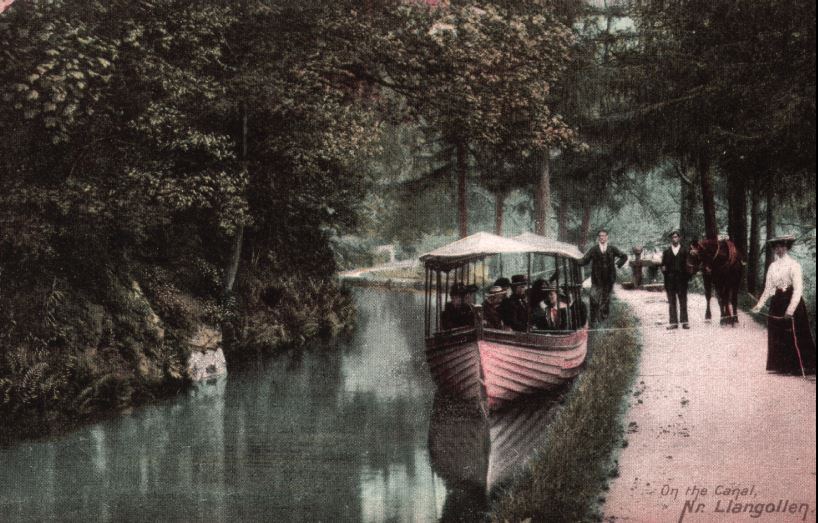
© Llangollen Museum
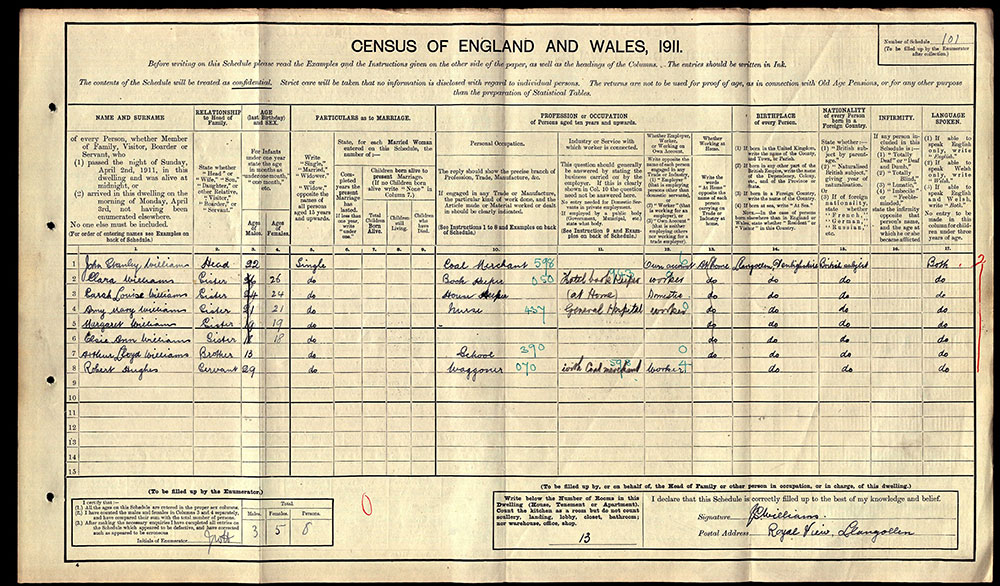
© The National Archive Crown Copyright 1911
4. Siambr Wen
Siambr Wen has a distinctive castle-like appearance with a crenellated parapet and octagonal end turrets. Set within the garage walls are medieval stone slabs believed to date from the 1300s and to have come from nearby Valle Crucis Abbey.
They were found when Llangollen Bridge was extended to go over the railway by Henry Robertson, the leading Scottish railway engineer and MP for Shrewsbury. The medieval stones were placed in the garden of Siambr Wen and later set into the garage walls.
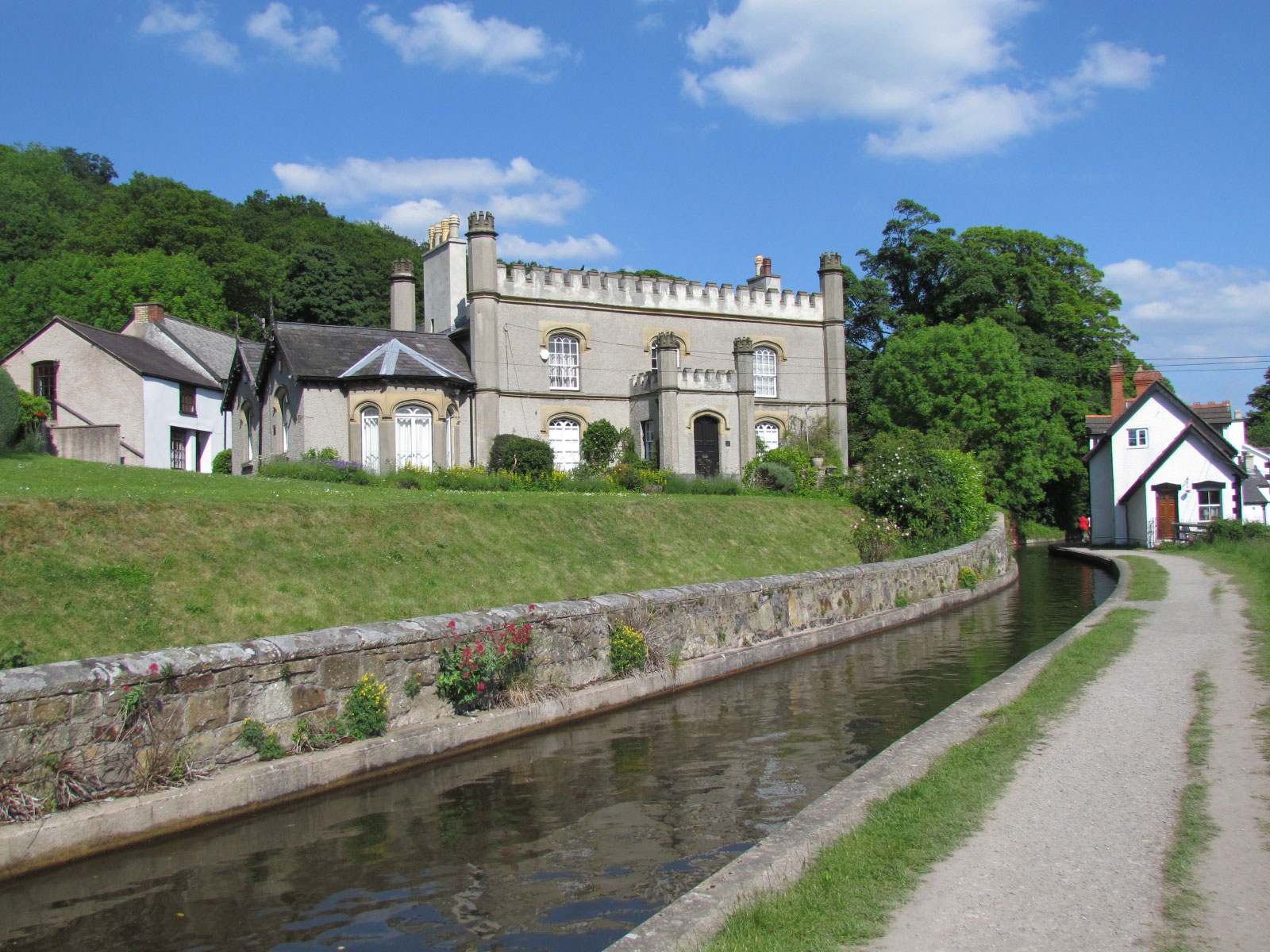
© Heather Williams
Siamber Wen was the home of Alexander Reid, owner and partner of Llangollen Flagstone Company, Pentrefelin in the 1840s. He was also a director of the Minera Mining Company, formed in 1845 to exploit the lead in the Wrexham area. The miners discovered new reserves of lead deep underground so by the mid 1860s the profits were over £60,000, the equivalent of more than £7.5 million today. This enabled Alexander to move to the even grander Llantysilio Hall close to the end of the Llangollen Canal.
Later Siambr Wen was the home of Henry Robertson’s elderly brother John and his three sisters. John Robertson was a retired army doctor who had worked overseas, mainly in India, for over 20 years. Whilst in Llangollen he helped to establish the Llangollen Cottage Hospital, built in 1876.
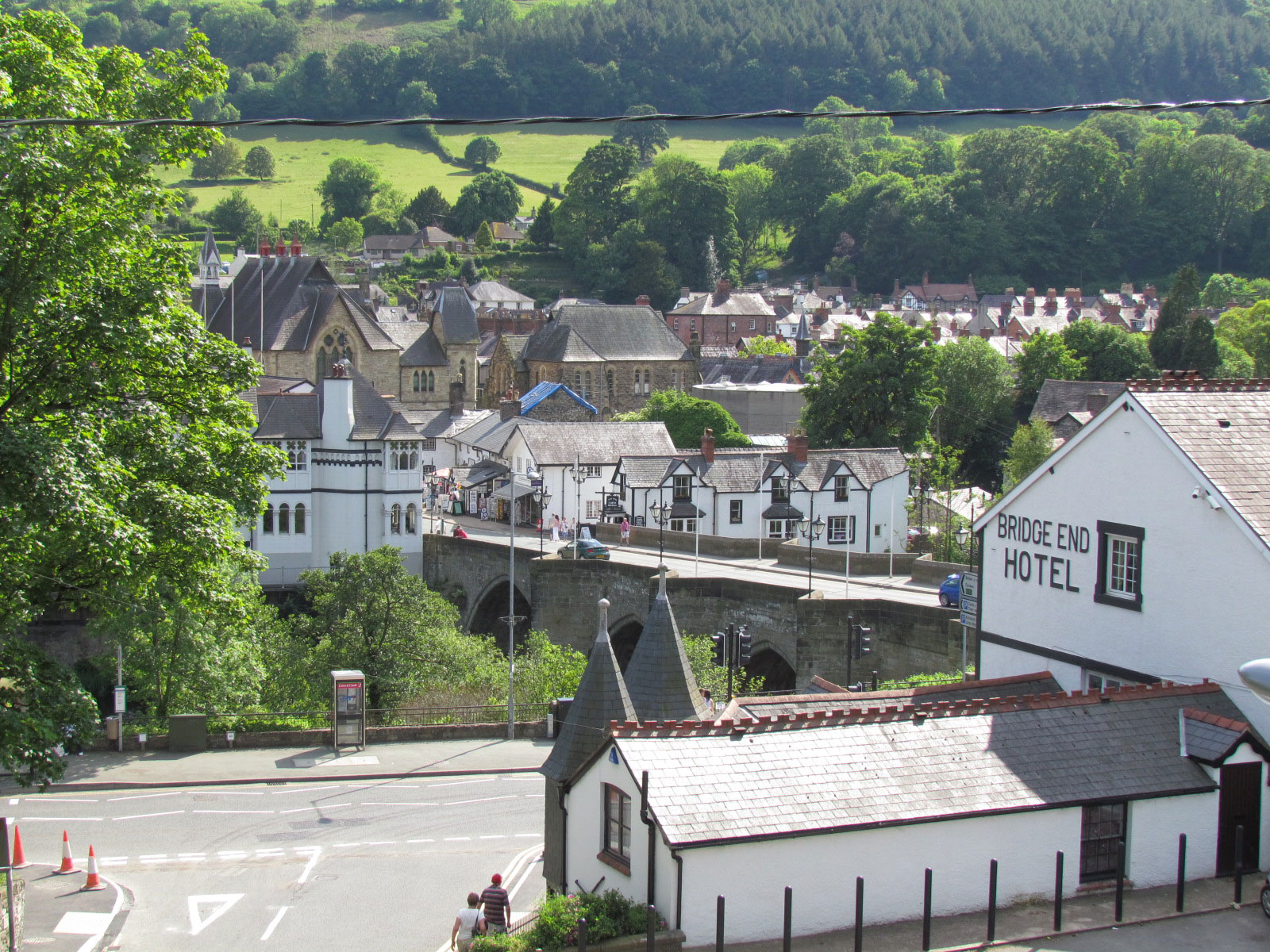
© Heather Williams
5. Dee Mills
At the bottom of the embankment as the canal leaves Llangollen is Upper Dee Flannel Mill, which was powered by water taken from the canal rather than the river. This was unusual for a mill and shows how plentiful the water supply was from the Welsh hills.
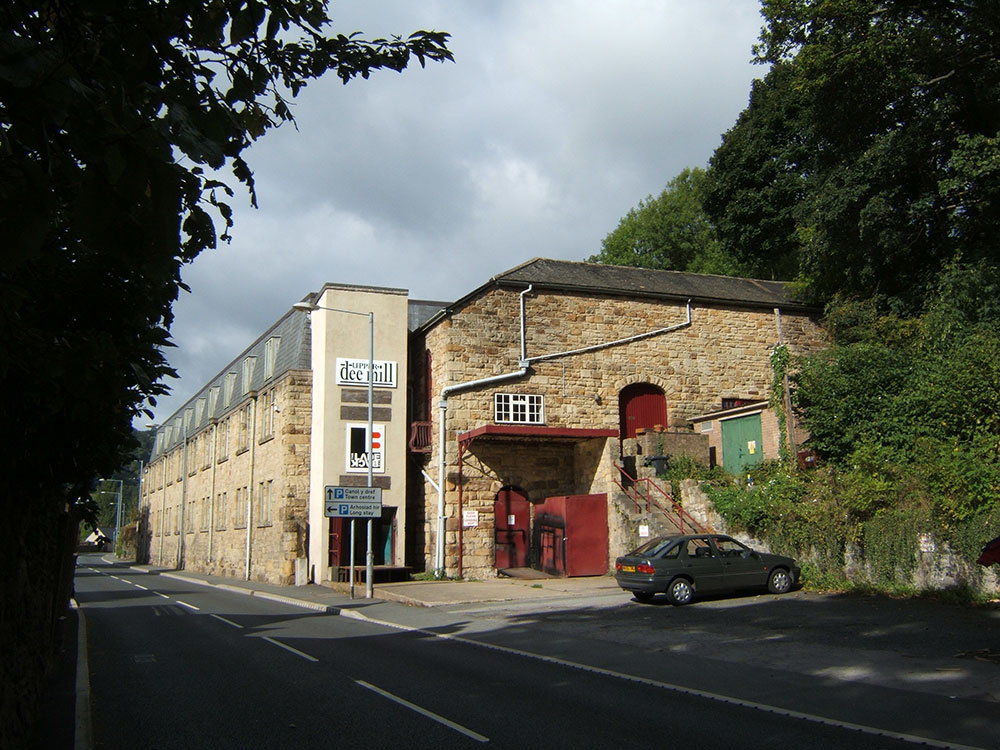
Upper Dee Mills © Crown copyright: RCAHMW
Lower Dee Mill was built as a cotton mill close to the River Dee by entrepreneurs Turner and Comber in 1805. This business lasted thirty years before it was bought by Robert Hughes for use as a woollen weaving mill to serve the prosperous wool trade. The business expanded into the Upper Dee Mill in 1855 and was the largest of several woollen mills that grew up in Llangollen after the canal was built. Both Mills remained in production until 1921.
Upper Dee Mill was later occupied by R & G Cuthberts seed merchants. In 1932 William Clayton Russon bought the company which grew plants and particularly roses. William excelled in marketing and by 1937 the firm was selling seeds in bright colour printed packets on Woolworths’ counters. The seed stocks and firm’s headquarters were moved to Wales on the Government’s instructions, as there was a fear of bombing in the Home Counties.
Eventually in 1942 William relocated the business to Llangollen, having tried relocating in two other places in North Wales. William soon developed the business into a thriving mail order business with a reputation for quantity and competitive prices. He was the first President of the Llangollen International Eisteddfod in 1947 and was knighted in 1968, just before his death.
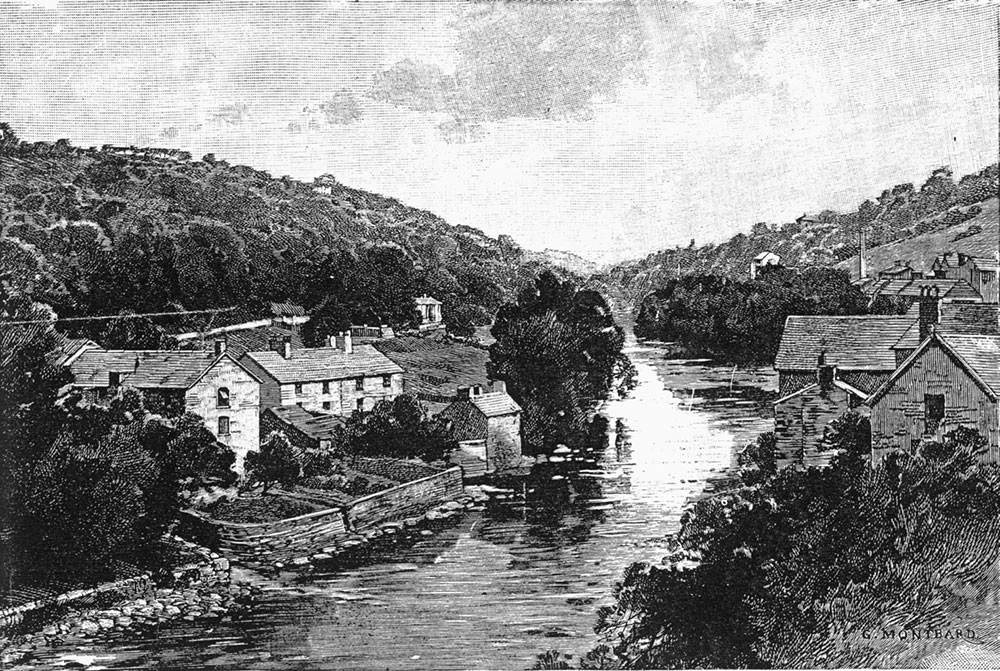
Lower Dee Mill © Llangollen Museum
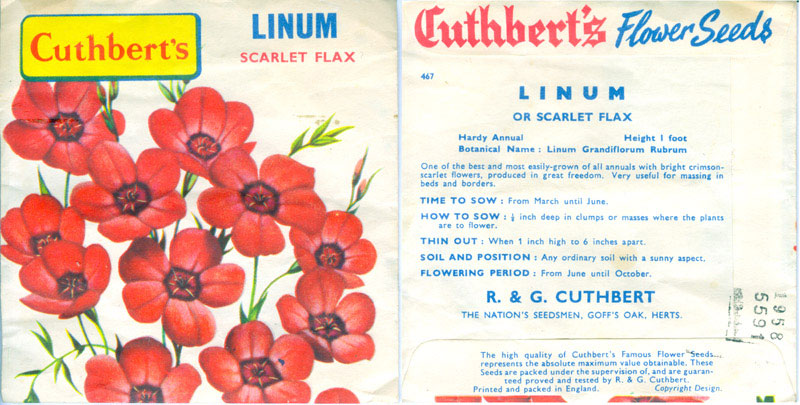
© WoolworthsMuseum.co.uk
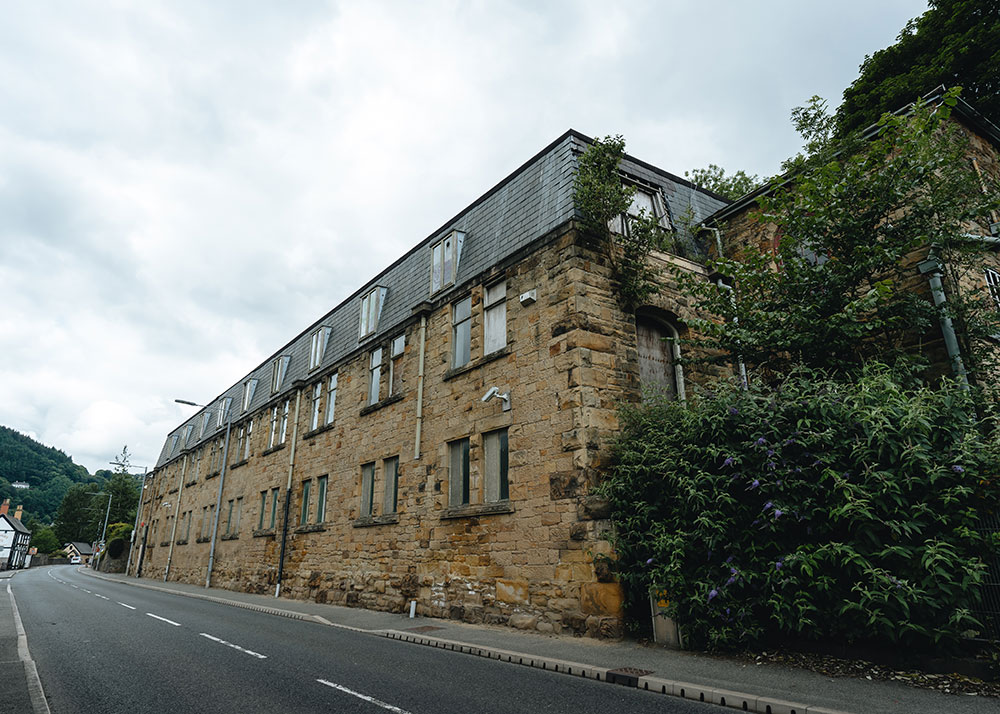
Upper Dee Mills
6. Llanddyn
Llanddyn Bridge is an original arched stone bridge, typical of those on the Llangollen Canal built using the local materials. The bridge was designed by Thomas Telford and Thomas Denson between 1804 and 1808.
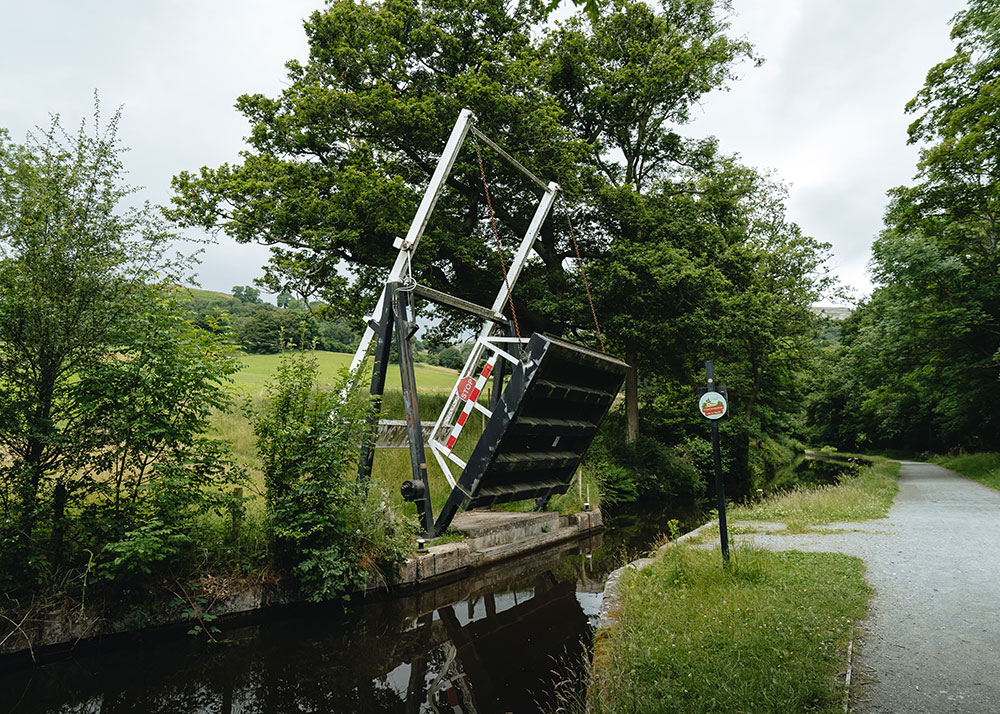
Llanddyn Cottage was built by the Shropshire Union Railway and Canal Company in the late 1800s for a lengthsman. He was responsible for maintaining this part of the canal, probably including Llanddyn Lift Bridge, and it reflects the growing organisation of the canal maintenance structure. Close to the cottage is a stop-plank store, where planks are kept to deal with any breaches on the canal.
Llanddyn Lift Bridge provides access to fields either side of the canal. It was rebuilt in the 1900s in a traditional style but with hydraulic operation.
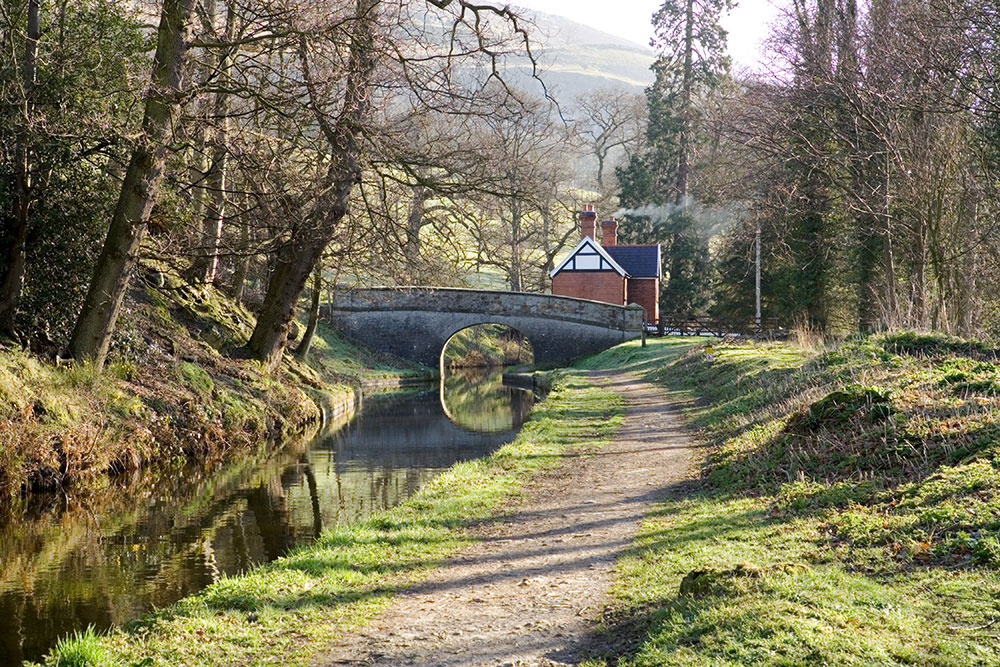
© Crown copyright: RCAHMW
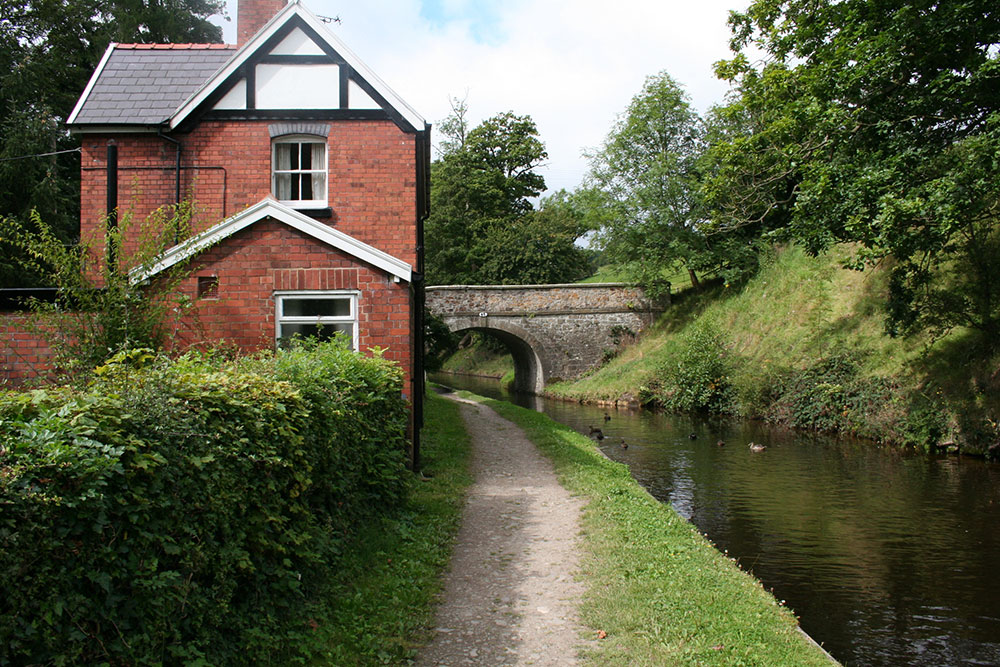
© Crown copyright: RCAHMW
7. Castell Dinas Brân
From the towpath you can see Castell Dinas Brân, dramatically perched on the top of the hill. The prominent ruins are one of the landmarks of the Dee Valley and it is said to be one of the most romantic and magical places in Britain, drawing visitors up the steep hill.
A ‘camera obscura‘ was built in the ruins in the late 1800s to take advantage of the magnificent view from the top. There was even a tea room and shop at the top!
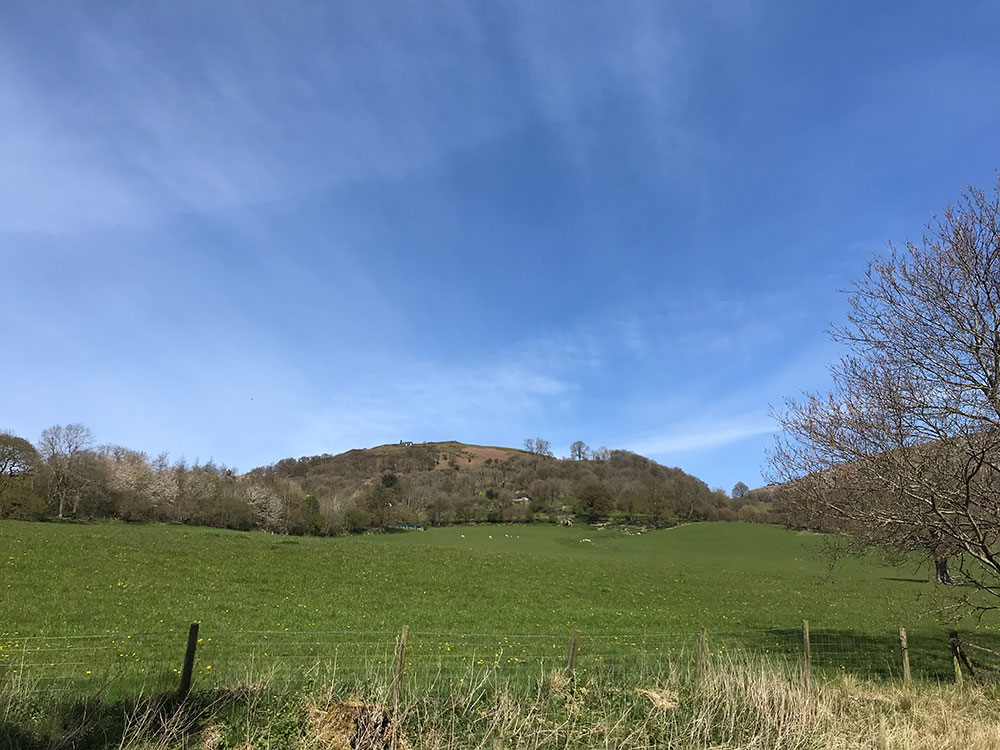
© Jo Danson
Castell Dinas Brân stands on the site of an ancient Iron Age hillfort. The castle is thought to have been built by the Welsh Prince of Powys, Gruffudd ap Madog in the late 1260s.
The castle is rectangular in shape and you can see the remains of the characteristic D shaped ‘Welsh tower’. A closer look reveals traces of features such as wall plaster, fire places and even en-suite toilets, so originally it was a splendid, well defended fortress. The active life of the castle was very short, as the Welsh soldiers set fire to it in 1277 to prevent it being used by the invading English army of King Edward 1. The castle was briefly in the hands of the English soldiers but it was soon abandoned and left to the crows, where the popular local name Crow’s Fortress comes from.
A famous Welsh legend about Myfanwy is associated with the castle. The Welsh medieval poet Hywel ab Einion was inspired to write a poem Ode to Myfanwy Fychan of Castell Dinas Brân which tells the story of a poor bard who goes to the castle to sing and play to Myfanwy. He believes his love will return but instead she rejects him for a rich nobleman. In the 1800s the poet John ‘Ceiriog’ Hughes, the Robert Burns of Wales, was inspired to write another poem Myfanwy Fychan which was later set to music by Joseph Parry and now is a popular song in Wales.
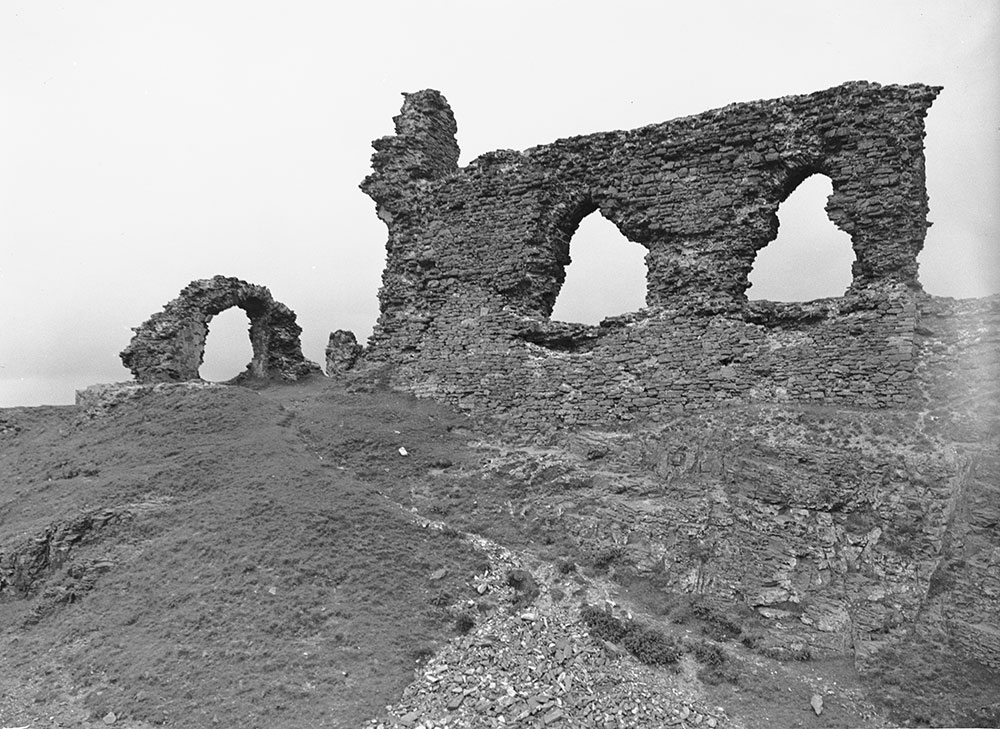
© Crown copyright: RCAHMW
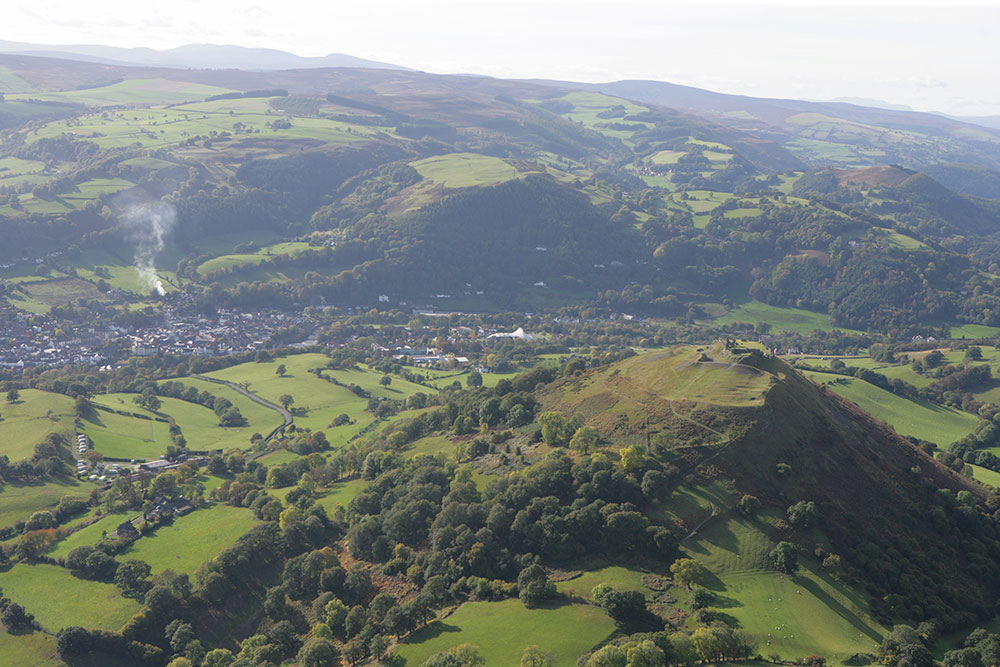
© Crown copyright: RCAHMW
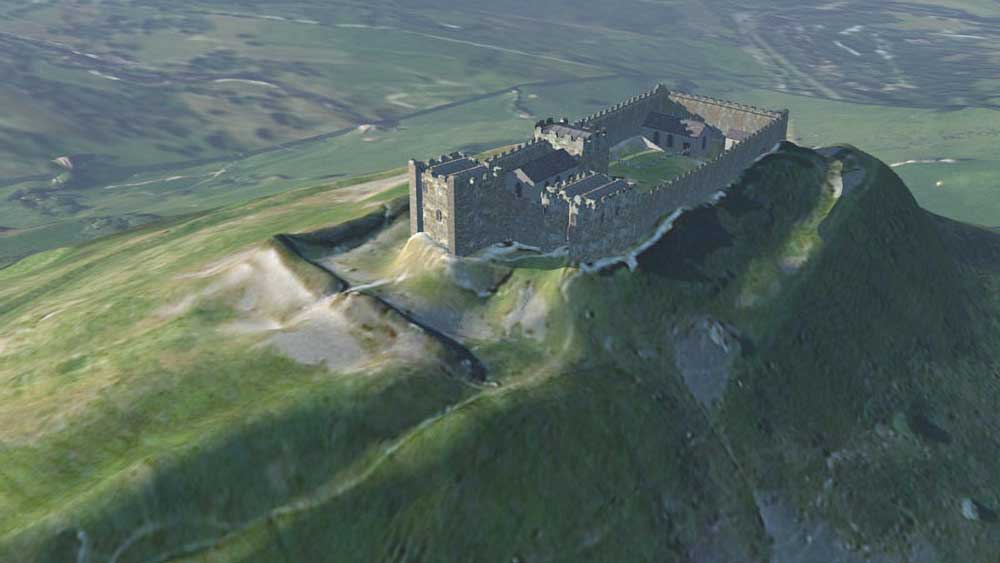
Reconstruction © Clwydian Range and Dee Valley AONB
8. Sun Bank
The Sun Inn was so called because it sold beer from the Sun Brewery, the longest running brewery in Llangollen.
Just below the Sun Inn was a wharf on the canal where limestone was brought down from Trevor Quarry by a tramroad and incline. Boats were able to turn in a basin nearby at Bryn Howel, created to take advantage of a natural indent in the hillside.
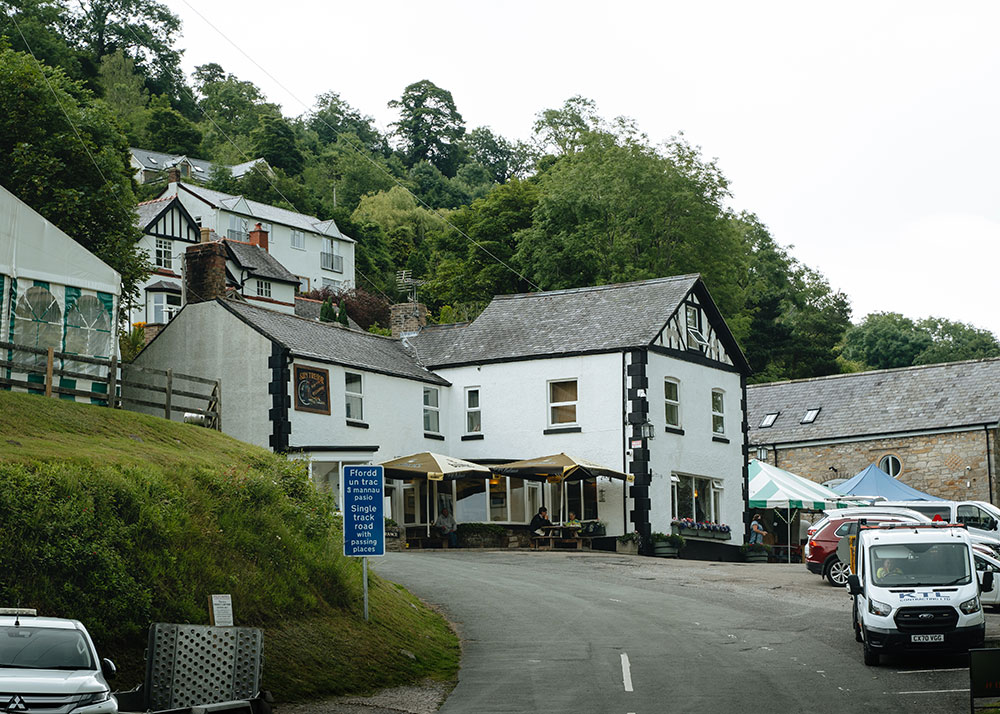
A dreadful accident happened here on 7th September 1945 when the canal burst its banks and washed away the railway embankment, leaving the track suspended in mid air. The signalmen were unaware that anything was wrong and so the first train of the day carrying mail and goods fell into the breach, killing the driver. The fireman miraculously escaped with injuries and the guard, who was also injured managed to walk back to Trevor Station to raise the alarm. When he arrived he was asked ‘Why haven’t you cleared the section?’ The train, which had burst into flames, was mostly destroyed.
The force of the water created a breach of over 35 metres long and more than 15 metres deep. The report into the accident concluded that the maintenance of the canal had received close attention and the cause of the breach was probably due to the unstable nature of the underlying boulder clay. It was considered that even though strengthening measures had been carried out there was still a potential threat of further breaches of the canal. It was suggested that the canal could be closed in this area, as at that time there was no longer any obligation to maintain the canal for navigation purposes but in the end it was the canal that remained as a transport route, not the railway.
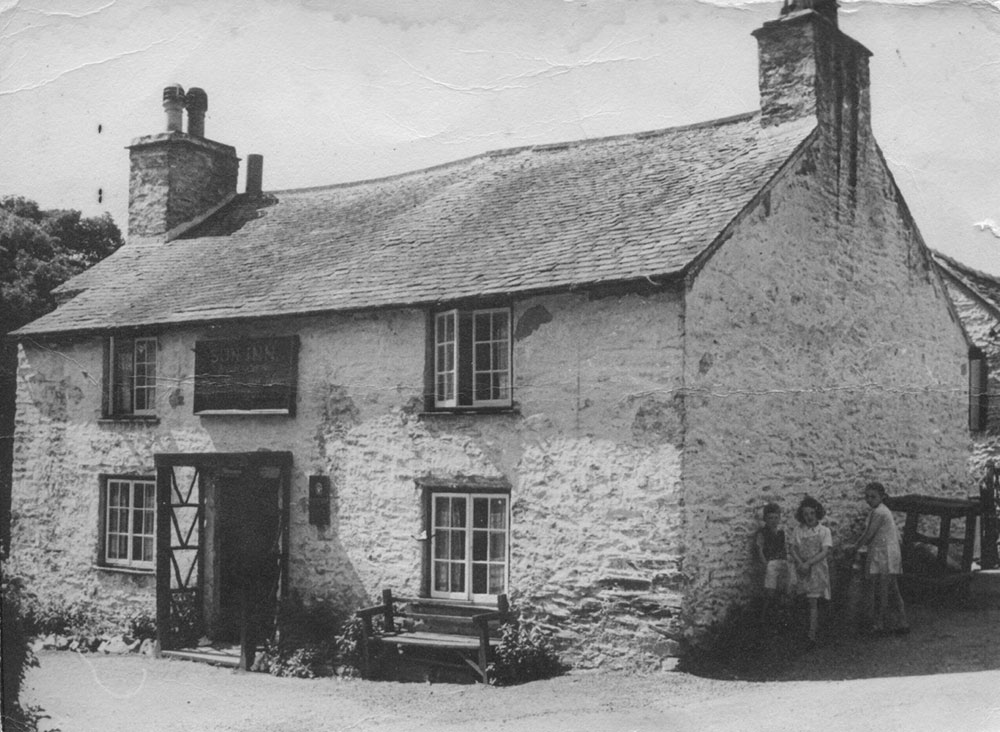
© Crown copyright: RCAHMW
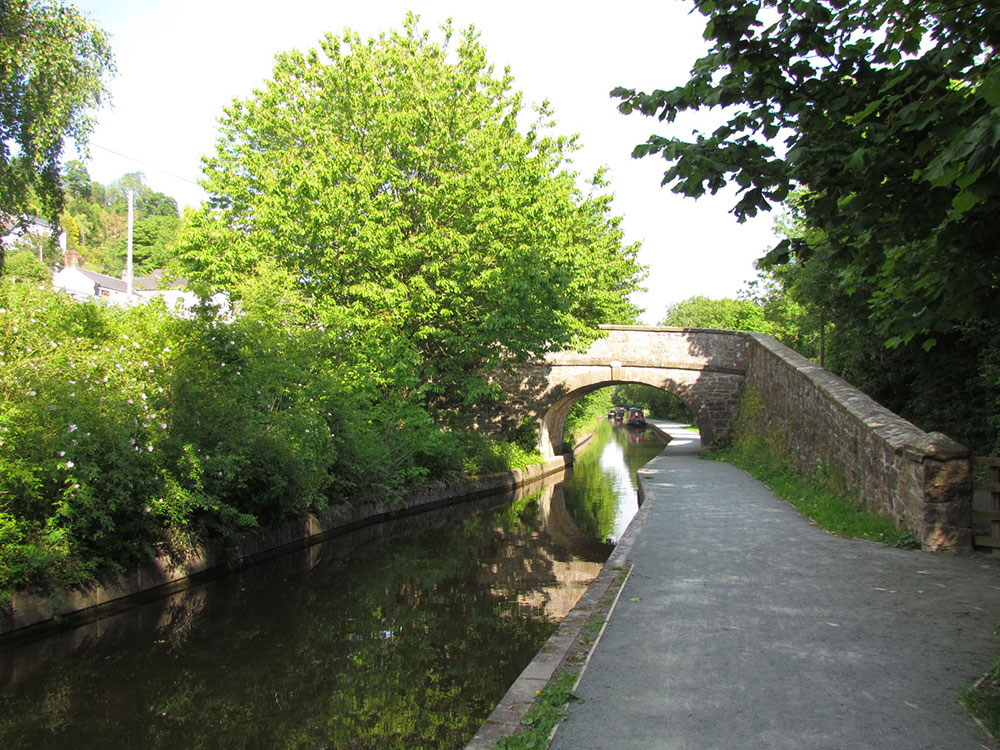
© Heather Williams
9. Trevor Rocks
Trevor Rocks marks the end of Eglwyseg Rocks, a spectacular carboniferous limestone escarpment. Stone was quarried from the escarpment for over 200 years leaving a legacy of challenging rock faces enjoyed by rock climbers.
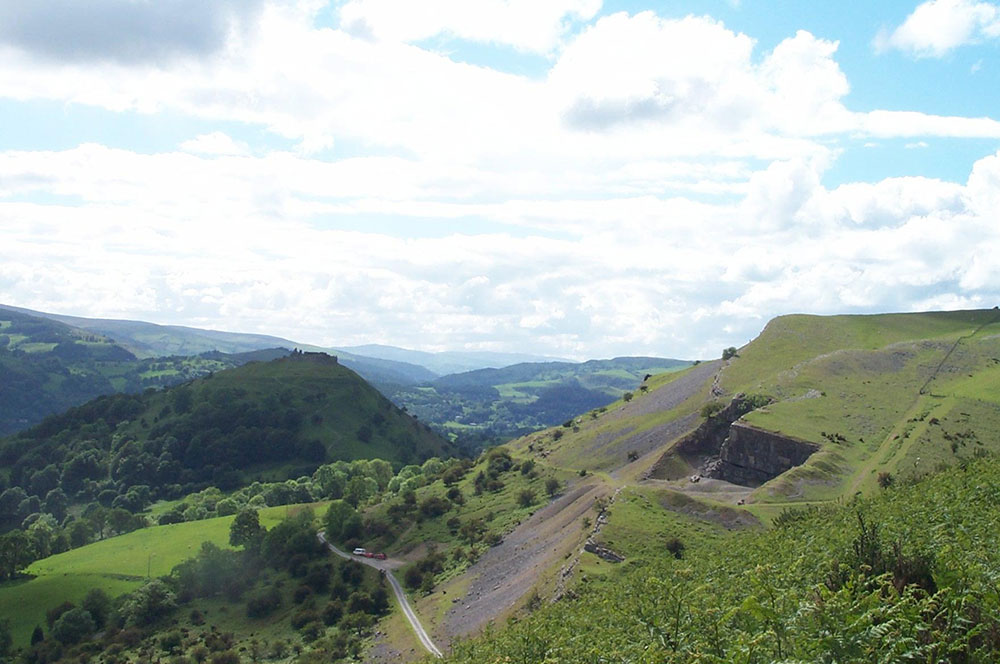
© Crown copyright: RCAHMW
Trevor Uchaf quarry was extensive with at least three faces being worked in the late 1800s. A series of limekilns were situated around the quarry site but were disused by 1912. There are remains of a railway winding house which stood at the top of a steep incline, one of the main inclines down to the Llangollen Canal, and later the railway line at Plas Ifan wharf.
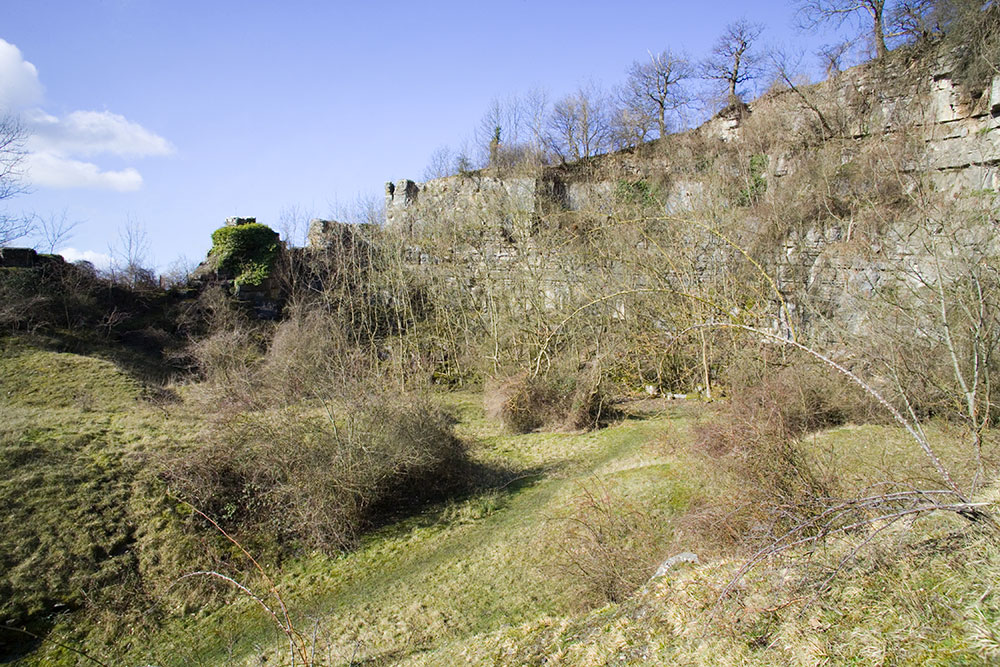
© Crown copyright: RCAHMW
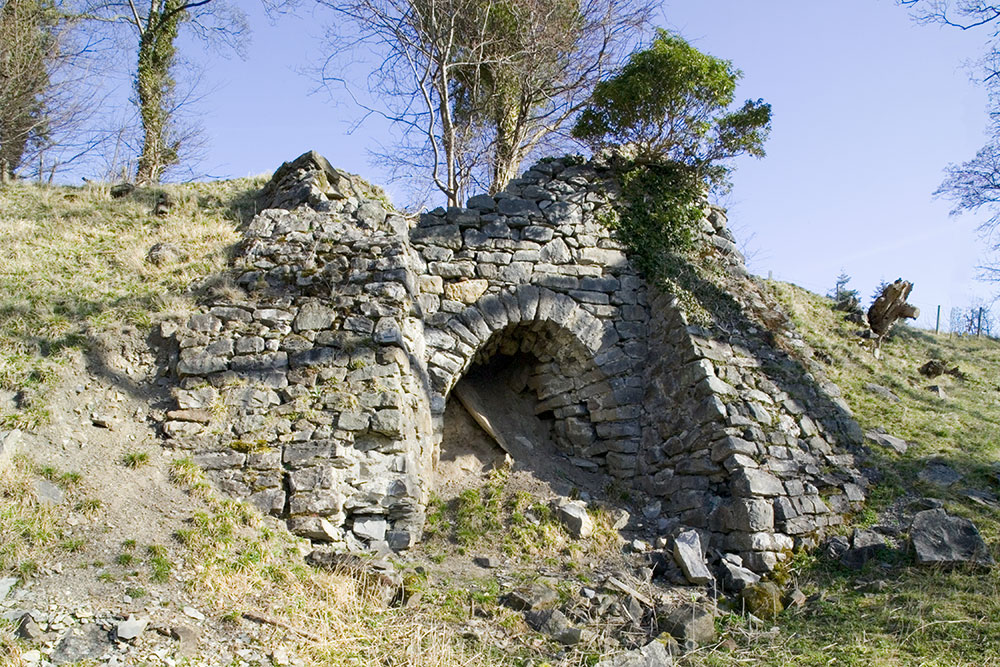
Old lime kiln at Trevor Uchaf © Crown copyright: RCAHMW
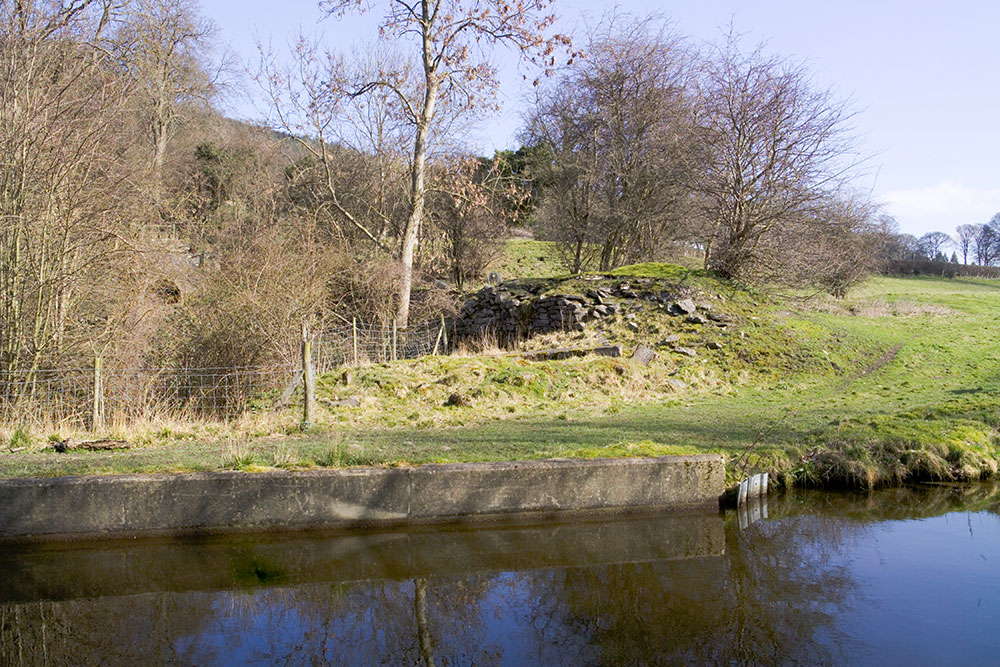
© Crown copyright: RCAHMW
10. Bryn Howel
Bryn Howel is a striking house built in 1896 for James Coster Edwards, the son of J. C. Edwards Senior, owner of the great brick, tile and terracotta works. Edwards’ products of bright red brickwork, terracotta, tile hanging and tiled roof are in used in the building, probably produced at the family’s Pen-y-Bont works.
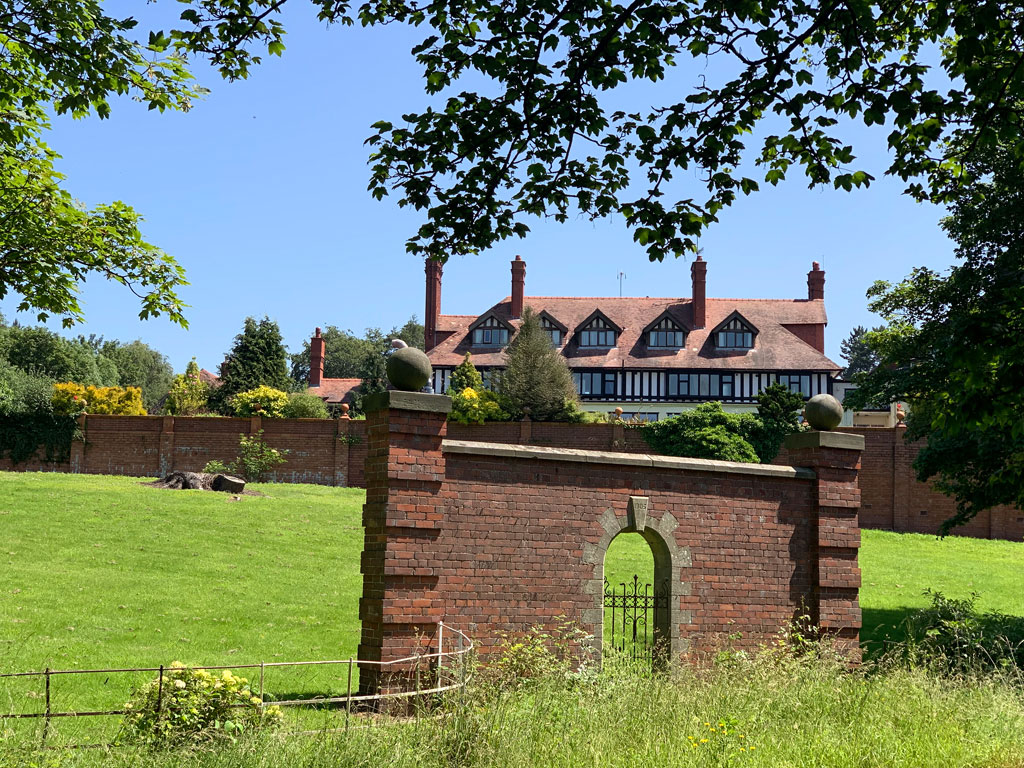
© John Allan
The gardens, which included a walled garden, produced all the vegetables, fruit and flowers for the mansion. The sweeping grounds lead down to the canal, where an attractive boathouse was built, showing how popular boating had become by the late 1800s.
James lived here with his wife and two children until he died in 1934. His widow allowed it to be used as a billet for army personnel in World War 2. The house was sold in the 1960s and was turned into a hotel. Guests include Pavarotti who stayed here on a visit to the Llangollen International Eisteddfod in 1995.
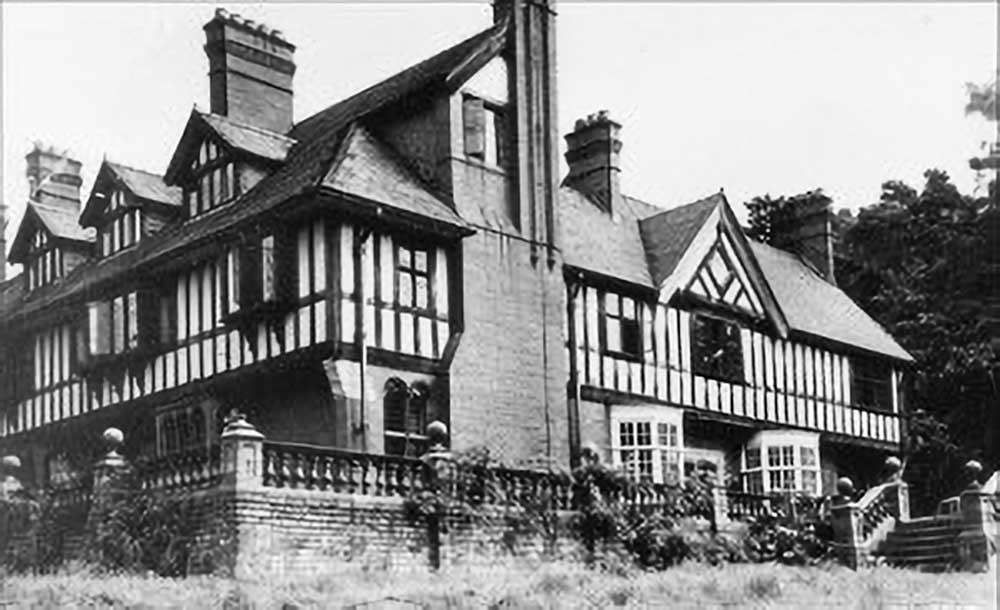
© Crown copyright: RCAHMW
